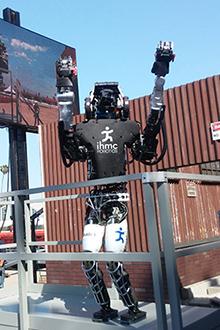Alumnus wins $1 million in robotics competition
Movie robots are often more science fiction than science fact. Unlike the intelligent robots of A.I. and Chappie, real ones developed in engineering labs tend to be slow, clumsy and incapable of making good decisions on their own.
Tulane University alumnus Ken Ford, director of the Florida Institute for Human and Machine Cognition (IHMC), is working to change that.
In June, Ford's team beat a suite of international competitors to win $1 million in the Defense Advanced Research Projects Agency Robotics Challenge, a contest designed to drive research and innovation in humanoid robotics. Winning first place for American teams, first for teams using the Atlas chassis, and second place overall, Ford called the result “a perfect score.”
Each competing robot attempted to complete a series of eight tasks including driving a car, navigating debris and turning a circular valve, all with limited or no communication with its handlers.
The tasks were inspired by the idea of using robots for critical tasks, such as exploring the destroyed Japanese Fukushima nuclear reactor, thereby minimizing human exposure to dangerous environments.
The IHMC robot, known as “Running Man,” suffered a fall that damaged its limbs and other parts of the body on the first day of the contest. The team worked all night to repair the robot, but the damaged areas remained a great concern among the team. This made the victory even more impressive, Ford says.
This isn't the first time Tulane students, alumni and faculty have participated in the high-impact research at IHMC, Ford says.
“IHMC enjoys a strong relationship with Tulane, and the two organizations have collaborated in many ways over the years,” he says. “Tulane graduates and student interns are well regarded and have been employed in the robotics group as well as elsewhere at IHMC.”
Additionally, Tulane's computer science department and IHMC have partnered in recruiting jointly appointed faculty.
Today's robots may still be some ways off from those in Hollywood films, but thanks to successes like these, it's safe to say we're one mechanical step closer.
Benjamin Morris is a freelance writer in New Orleans.

